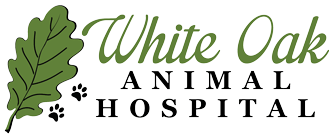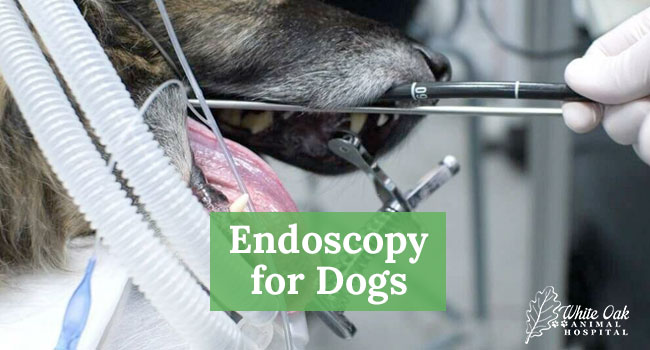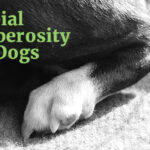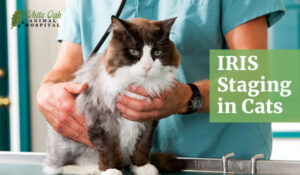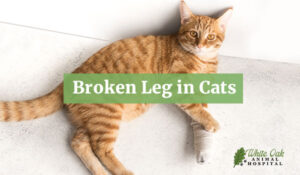Endoscopy for dogs is an essential procedure that plays a crucial role in timely diagnosis and treatment within veterinary care. Early detection of health issues in dogs can be the difference between a manageable condition and a severe, potentially life-threatening situation. Endoscopy for dogs is particularly valuable because it allows veterinarians to directly visualize internal organs, helping to identify problems that might not be detectable through other methods. This article aims to inform pet owners about the critical warning signs that may indicate the need for an endoscopy for dogs, ensuring that they can take swift action to safeguard their pet’s health.
Recognizing the Need: 5 Critical Warning Signs for Endoscopy in Dogs
Persistent Vomiting or Regurgitation
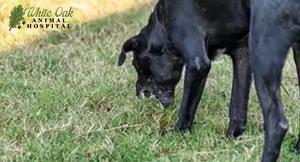 Chronic vomiting or regurgitation in dogs is a significant red flag that should never be overlooked. These symptoms can indicate underlying issues such as gastrointestinal blockages, ulcers, or even tumors. When a dog frequently vomits or regurgitates, it suggests that something is obstructing the normal flow of food or liquids through the digestive tract. In such cases, endoscopy for dogs can be instrumental in identifying the exact cause. By allowing the veterinarian to view the internal structures directly, endoscopy can reveal blockages or lesions that are causing these symptoms, enabling appropriate and timely treatment.
Chronic vomiting or regurgitation in dogs is a significant red flag that should never be overlooked. These symptoms can indicate underlying issues such as gastrointestinal blockages, ulcers, or even tumors. When a dog frequently vomits or regurgitates, it suggests that something is obstructing the normal flow of food or liquids through the digestive tract. In such cases, endoscopy for dogs can be instrumental in identifying the exact cause. By allowing the veterinarian to view the internal structures directly, endoscopy can reveal blockages or lesions that are causing these symptoms, enabling appropriate and timely treatment.
Unexplained Weight Loss
Unexplained weight loss in dogs is another critical indicator that something may be seriously wrong. While weight loss can result from various factors, when it occurs without any obvious reason, it often points to gastrointestinal issues or metabolic disorders. Endoscopy for dogs is particularly useful in these cases, as it allows for a detailed examination of the digestive system. Conditions such as inflammatory bowel disease (IBD) or even certain types of cancer can be diagnosed through this procedure. By identifying the root cause of the weight loss early on, endoscopy enables veterinarians to develop a targeted treatment plan that addresses the underlying issue.
Difficulty Swallowing or Pain When Eating
When a dog experiences difficulty swallowing or shows signs of pain while eating, it could indicate an obstruction or damage within the esophagus or stomach. This symptom is particularly concerning because it often suggests that there is a physical barrier preventing the smooth passage of food. Endoscopy for dogs can provide a clear and direct view of the esophagus and stomach, helping to diagnose conditions such as strictures, tumors, or foreign objects lodged in these areas. With this information, veterinarians can then proceed with the most appropriate treatment, whether it involves removing the obstruction or addressing any underlying damage.
Chronic Diarrhea or Bloody Stools
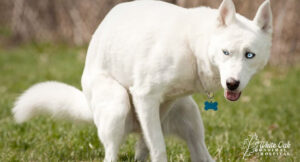 Persistent diarrhea or the presence of blood in a dog’s stools should never be ignored, as these symptoms can indicate serious underlying conditions. Chronic diarrhea might be a sign of infections, inflammation, or even more severe issues like cancer. Bloody stools, in particular, are a strong indication that there is bleeding somewhere in the gastrointestinal tract. Endoscopy for dogs is a powerful diagnostic tool in these situations, as it allows veterinarians to visually inspect the intestines and colon, identify the source of the problem, and take biopsies if needed. Early detection through endoscopy can lead to more effective treatment and better outcomes.
Persistent diarrhea or the presence of blood in a dog’s stools should never be ignored, as these symptoms can indicate serious underlying conditions. Chronic diarrhea might be a sign of infections, inflammation, or even more severe issues like cancer. Bloody stools, in particular, are a strong indication that there is bleeding somewhere in the gastrointestinal tract. Endoscopy for dogs is a powerful diagnostic tool in these situations, as it allows veterinarians to visually inspect the intestines and colon, identify the source of the problem, and take biopsies if needed. Early detection through endoscopy can lead to more effective treatment and better outcomes.
Frequent Coughing or Respiratory Distress
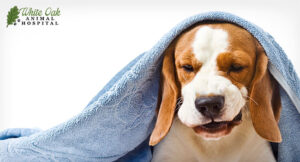 Frequent coughing or signs of respiratory distress in dogs may point to issues beyond just the respiratory system. For example, a persistent cough could be due to a foreign object lodged in the airway or a tumor pressing on the trachea. Endoscopy for dogs can be invaluable in such cases, as it enables veterinarians to examine the respiratory tract directly, including the bronchi and lungs. This procedure helps identify the cause of the coughing or breathing difficulties, whether it’s a foreign body, infection, or growth and guides the appropriate intervention to relieve the symptoms and address the underlying condition.
Frequent coughing or signs of respiratory distress in dogs may point to issues beyond just the respiratory system. For example, a persistent cough could be due to a foreign object lodged in the airway or a tumor pressing on the trachea. Endoscopy for dogs can be invaluable in such cases, as it enables veterinarians to examine the respiratory tract directly, including the bronchi and lungs. This procedure helps identify the cause of the coughing or breathing difficulties, whether it’s a foreign body, infection, or growth and guides the appropriate intervention to relieve the symptoms and address the underlying condition.
What is Endoscopy for Dogs, and How Does It Work?
Endoscopy for dogs is a minimally invasive procedure that involves using a specialized instrument called an endoscope to examine the internal organs of a dog. The endoscope is a thin, flexible tube equipped with a camera and light, allowing veterinarians to see inside the digestive or respiratory tracts in real time. During the procedure, the endoscope is carefully inserted into the dog’s body, usually through the mouth or rectum, depending on the area being examined. This method provides a detailed view of the internal organs without the need for surgery, making it a safer and less invasive option for diagnosing various conditions.
Common Reasons Dogs Need Endoscopy
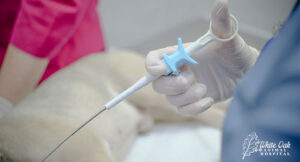 Several health issues might necessitate an endoscopy for dogs. Gastrointestinal problems such as chronic vomiting, diarrhea, or suspected blockages are among the most common reasons. Respiratory issues, like persistent coughing or difficulty breathing, also often require an endoscopy to diagnose. This procedure is particularly valuable because it not only allows for the visualization of internal structures but also enables veterinarians to take biopsies if needed. By providing a precise diagnosis, endoscopy for dogs helps veterinarians plan the most effective treatment strategies for these serious conditions.
Several health issues might necessitate an endoscopy for dogs. Gastrointestinal problems such as chronic vomiting, diarrhea, or suspected blockages are among the most common reasons. Respiratory issues, like persistent coughing or difficulty breathing, also often require an endoscopy to diagnose. This procedure is particularly valuable because it not only allows for the visualization of internal structures but also enables veterinarians to take biopsies if needed. By providing a precise diagnosis, endoscopy for dogs helps veterinarians plan the most effective treatment strategies for these serious conditions.
Endoscopy vs. Other Diagnostic Tools
When comparing endoscopy for dogs with other diagnostic tools like X-rays or ultrasounds, the advantages of endoscopy become clear. Unlike X-rays or ultrasounds, which provide indirect images, endoscopy offers a direct, real-time view of the internal organs. This allows for more accurate diagnoses, especially when dealing with complex cases. Additionally, endoscopy for dogs enables veterinarians to take tissue samples on the spot, which can be crucial for diagnosing cancers or other conditions that require histopathological analysis. This combination of visualization and sampling capabilities makes endoscopy a superior choice in many diagnostic scenarios.
Conditions Diagnosed and Treated with Endoscopy
 Endoscopy for dogs is used to diagnose and sometimes treat a variety of conditions. Common conditions diagnosed through this procedure include gastrointestinal blockages, tumors, ulcers, and inflammatory diseases like IBD. In addition to diagnosis, endoscopy can also be used to perform certain treatments, such as removing foreign objects or polyps. The ability to both diagnose and treat issues during the same procedure makes endoscopy a highly efficient and valuable tool in veterinary medicine. By providing detailed insights into the dog’s condition, endoscopy enables more targeted and effective treatments, improving the overall prognosis.
Endoscopy for dogs is used to diagnose and sometimes treat a variety of conditions. Common conditions diagnosed through this procedure include gastrointestinal blockages, tumors, ulcers, and inflammatory diseases like IBD. In addition to diagnosis, endoscopy can also be used to perform certain treatments, such as removing foreign objects or polyps. The ability to both diagnose and treat issues during the same procedure makes endoscopy a highly efficient and valuable tool in veterinary medicine. By providing detailed insights into the dog’s condition, endoscopy enables more targeted and effective treatments, improving the overall prognosis.
Risks and Complications of Endoscopy for Dogs
While endoscopy for dogs is generally safe, it is not entirely without risks. Potential complications include reactions to anesthesia, minor bleeding, or, in rare cases, infection. However, these risks are typically low, especially when the procedure is performed by an experienced veterinarian. To minimize these risks, veterinarians take several precautions, including thorough pre-procedure assessments and careful monitoring during and after the procedure. The benefits of obtaining a clear and accurate diagnosis through endoscopy often far outweigh these potential risks, making it a valuable option for managing your dog’s health.
 At White Oak Animal Hospital, we are dedicated to offering the highest standard of care, focusing on integrative options that are not commonly available elsewhere. Our team, with over 28 years of experience, is committed to providing specialized services tailored to your pet’s unique needs. This includes Traditional Chinese Veterinary Medicine (TCVM) Telemedicine consultations, which allow us to combine conventional and holistic approaches for a more comprehensive treatment plan. By integrating these advanced techniques with endoscopy for dogs, we ensure that your pet receives the most thorough and personalized care possible.
At White Oak Animal Hospital, we are dedicated to offering the highest standard of care, focusing on integrative options that are not commonly available elsewhere. Our team, with over 28 years of experience, is committed to providing specialized services tailored to your pet’s unique needs. This includes Traditional Chinese Veterinary Medicine (TCVM) Telemedicine consultations, which allow us to combine conventional and holistic approaches for a more comprehensive treatment plan. By integrating these advanced techniques with endoscopy for dogs, we ensure that your pet receives the most thorough and personalized care possible.
If your dog is exhibiting any of the critical warning signs discussed in this article, such as persistent vomiting, unexplained weight loss, or difficulty swallowing, it is essential to seek veterinary attention immediately. Endoscopy for dogs could be the key to identifying the root cause of these symptoms and implementing an effective treatment plan. We strongly encourage you to visit White Oak Animal Hospital, where our experienced team can provide expert evaluation and the highest level of care for your pet. Taking prompt action can make all the difference in your dog’s health and well-being.
Frequently Asked Questions
How long does an endoscopy for dogs typically take?
An endoscopy for dogs generally takes between 30 minutes to an hour, depending on the complexity of the case. This includes the time for the procedure itself as well as the preparation and recovery period. Your veterinarian will provide specific details based on your dog’s needs.
Is the endoscopy procedure painful for dogs?
No, endoscopy is not painful for dogs as the procedure is performed under general anesthesia. This ensures that your dog remains comfortable and still throughout the process. Post-procedure, your dog may experience mild discomfort, but this is usually minimal and temporary.
Can all dogs undergo endoscopy, or are there restrictions?
Most dogs can safely undergo endoscopy, but the procedure may not be recommended for very young puppies, extremely elderly dogs, or those with certain pre-existing conditions that make anesthesia risky. Your veterinarian will assess your dog’s overall health to determine if endoscopy is a safe option.
What should I do to prepare my dog for an endoscopy?
Typically, your veterinarian will instruct you to withhold food from your dog for 12-24 hours before the procedure to ensure an empty stomach. Water may also be restricted for a few hours before the procedure. It’s important to follow your vet’s specific guidelines to minimize risks.
Related Posts
-
5 Warning Signs of Dog Allergies You Shouldn't Ignore
Canine health is significantly impacted by dog allergies, a prevalent concern among pet owners. Recognizing…
-
The Top 5 Signs of Cancer in Dogs: A Countdown to Awareness
Understanding the signs of cancer in dogs is crucial for pet owners. Early recognition of…
-
5 Telltale Signs of Tibial Tuberosity in Dogs: Unlocking the Mystery
Tibial tuberosity in dogs is a condition that all dog owners should be familiar with,…
-
5 Signs of Breast Cancer in Dogs You Shouldn't Ignore: Early Detection is Key
In the realm of canine health, one prevalent concern among pet owners is the specter…
